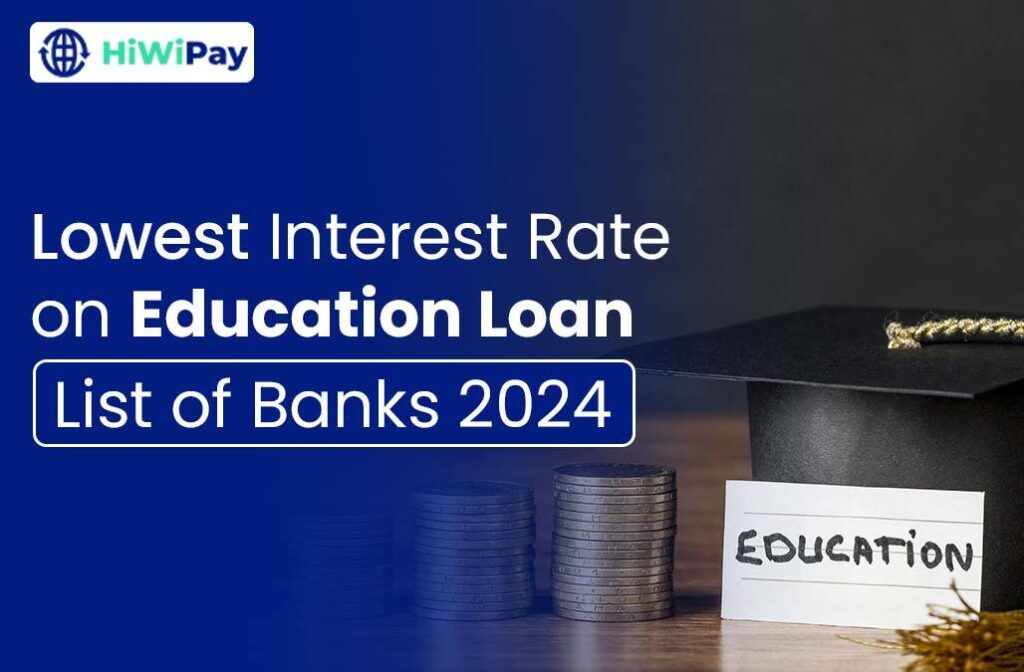Understanding Education Loans Process
Did you know that education loans don’t only cover tuition fees? Typically, they cover a wide range of expenses:
- Tuition fees: This is the primary expense covered by an education loan. It is covered under all education loans, irrespective of whether you get a loan from a bank or NBFC.
- Living or hostel expenses: Whether you go for on-campus or off-campus housing, an education loan covers it but only to a certain extent. The bank or NBFC usually allows you to spend only a specified percentage of the loan amount on living expenses.
- Travel expenses: The cost of travel from India to the country of study is usually included in the education loan. It usually covers the fare of one economy-class ticket.
- Books and equipment: The loan also covers the cost of books and other educational materials.
- Health insurance: Many universities abroad require international students to purchase health insurance. The educational loan covers this too, but it may vary from lender to lender.
- Other related expenses: You may have to pay examination fees, library fees, etc., for the course. The education loan covers this too, but again, this may vary from lender to lender, so don’t forget to ask.
Remember, it is always a good idea to check with the specific bank or financial institution for the exact details of what their education loan covers.
Apart from this, understanding the various components of education loans is crucial for you and your family. Here are the key components of education loans:
- Interest Rates: This is one of the most important factors as it significantly impacts the total amount you must repay. It may vary between 8.5% to 14%, depending on the bank or NBFC.
- Processing Fees: Some banks may charge a processing fee for the education loan. This is typically a percentage of the total loan amount. It is deducted from the loan amount when you get the loan.
- Collateral Requirements: Depending on the loan amount, some banks may require collateral as security against the loan. The collateral could be in the form of deposits, immovable property, fixed deposits, etc.
- Co-borrower Details: A co-borrower is a person who shares the responsibility of repaying the loan with the primary borrower. In the case of education loans, the co-borrower is usually a parent or a guardian. Also, the co-borrower’s credit score and financial stability can impact loan approval.
- Loan Tenure: This is the time period offered by the bank or NBFC to repay the loan amount and interest. It ranges from 8 to 15 years and varies from financial institution to financial institution.
- Moratorium Period: This is also known as the grace period. During this period, you are not required to repay the loan. It lasts until you complete the course and 6 months to a year after course completion.
- Prepayment: Some banks allow borrowers to prepay the education loan without any prepayment penalty.
- Tax Benefits: As per the Income Tax Act, the interest paid on the loan amount is deductible from your total taxable income up to 8 years.
Now that you have a clear understanding of education loans, let’s move onto comparing the loan interest rates.
Comparative Analysis of Education Loan Interest Rates
According to data from the Reserve Bank of India (RBI), State Bank of India, Bank of Baroda, Punjab National Bank, ICICI Bank, and Bank of India are among the top contenders in providing education loans.
Here is a Comparative Analysis of the Education Loan Interest Rates for 2024 among the Leading Banks in India:
| Bank | Minimum Loan Amount | Maximum Loan Amount | Interest Rate (Floating) | Processing Fee | Concession Benefits |
| State Bank of India (SBI) | INR 7.50 Lacs | INR 1.5 Cr | 8.15% to 11.75% p.a. | INR 10,000 per application | 0.50% concession in interest for girl students 0.50% concession for students availing of SBI Rinn Raksha or any other existing life insurance policy assigned in favour of the bank SBI Student Loan Scheme offers borrowers an interest subsidy of 1% on loans up to Rs. 20 lakhs for overseas education 0.50% interest concession to borrowers if they repay the loan amount on time |
| Bank of Baroda | Not specified | INR 150.00 lakh | 8.15% p.a. to 14.50% p.a. | No processing charges up to INR 7.50 lakh 1% of loan amount up to INR 10,000 | There are no documentation charges No security will be taken from applicants for loans up to INR 7.50 Lakhs A free debit card will be provided to the applicant of the loan The loan covers unique expenses like entrance exam fees for the SAT, LSATS, IELTS, TOEFL, GRE, GMAT, etc. It also covers student insurance, travel and accommodation expenses for international students of India |
| Punjab National Bank (PNB) | INR 10,000 | INR 1 Crore | 4% p.a. to 12.75% p.a. | Nil | Concessional Education loans for students or Persons with Disabilities (PwDs) under the Bank’s Education Loan schemes |
| ICICI Bank | Not specified | INR 2 Crore | 10.25% p.a. onwards | Up to 2% plus GST | Special product offerings for Canada, UK & Germany There is no margin for premium institutes Complete digital journey and pre-admission sanction |
| Bank of India | Not specified | INR 150.00 Lakh | 9.25% p.a. onwards | Nil | Several benefits, such as no documentation charges, no hidden charges, no prepayment penalty, and no collateral security up to Rs. 7.50 Lakhs There is also a nil margin up to Rs. 4.00 Lakhs |
Eligibility Criteria for Education Loans
The eligibility criteria for a study abroad education loan might differ from one financial institution to another, but the common criteria to get an approved education loan are:
- Indian National
- Age should be up to 35 years for non-employed individuals and up to 45 years for employed individuals
- Proof of admission
- Valid educational certificates showing a good academic record (of more than 50% marks)
- Co-applicant’s credit history or income proof (Co-applicant should be a parent or a guardian)
- Passport/i20 form/visa
Documents Required and Application Process?
Now, to apply for the loan, you must have the following documents:
- Identity and address proof of student or co-signer: Driving license, passport, Aadhaar card.
- Copy of passport
- Two copies of passport-size photographs of applicant/co-signer.
- Academic documents: Mark sheet of 10th, 12th, graduation, entrance exam result, or an equivalent credential.
- Proof of admission: Offer letter/admission letter/ID card (if available)
- Financial Documents: Bank statements, income tax returns, and other relevant financial documents.
- Copy of collateral documents.
- Demand letter from college or university.
- Form A2 signed by applicant or co-signer.
After you have gathered all the required documents, you can move on to the application process. Here are the steps you need to follow:
- Visit the Bank’s Website: Start by going to the bank or financial institution’s website where you want to apply for the loan.
- Fill out the Online Application: Provide your personal details, academic history, and specify your loan needs.
- Submit the Application: Once you have completed the form and attached the necessary documents, submit it.
- Verification: The bank will review your information and documents to confirm your eligibility. If everything checks out, they’ll move forward with your application.
- Loan Approval: After verifying your details, the bank will approve your loan. The money will then be sent directly to your chosen college or university based on their fee structure.
Remember, the specific requirements and process may differ depending on the bank or financial institution you choose.
Factors to Consider When Taking an Education Loan
When considering an education loan, it is important to take into account several factors to ensure you make the best decision for your financial situation. Here are some key factors to consider:
- Eligibility Criteria
- Courses for which the loan is applicable
- Collateral required, if any
- Co-signer/Guarantor required
- Margin amount
- Interest Rate
- Loan Amount
- Repayment Tenure
- Moratorium Period
- Credit Score
Remember to do your research, carefully consider your options, and then choose.
How to Calculate Your EMI on Education Loans
To figure out your monthly payments for education loans, you can use this formula:
EMI Amount = [Principal amount × Rate of Interest × (1 + Rate of Interest)^(Number of years for repayment in months)] / [(1 + Rate of Interest)^(Number of years for repayment in months) – 1]
Just add in these values:
Principal amount (the total loan)
Rate of Interest (the interest rate)
Number of years for repayment (converted into months)
Calculating like this can be daunting and confusing, so you can also use HiWiPay Online EMI Calculator. Just enter the loan amount, interest rate, loan period, course duration, moratorium period, and payment during the moratorium. Once you input the details, you will get the amount you need to pay per month.
Empowering Your Academic Journey with Hiwi
Easily find the perfect loan for your education in just a click. Say goodbye to complicated applications and unclear terms. Our simple process only needs your basic student and course information to connect you with the ideal lender, saving both your time and money. Visit HiWiPay website or download the app today.
FAQs on Lowest Interest Rate on Education Loan
Are there any banks offering interest-free education loans in India?
No, banks do not offer interest-free education loans in India.
What do education loans typically cover, and how do repayment terms vary?
Education loans typically cover tuition fees, living expenses, travel expenses, health insurance, books and equipment, and other related expenses.
As for the repayment terms, they can vary significantly among different banks and financial institutions. The key aspects of repayment terms include repayment period, moratorium period, EMI structure, and prepayment.
What should I do if my education loan application is rejected?
If your education loan application for studying abroad is rejected, follow these steps:
1. Understand why your application was rejected. Some common reasons include incomplete application forms, wrong or incomplete documents, insufficient funds, or borrowing from unacceptable borrowers.
2. Once you understand the reason for rejection, try to rectify the issue.
3. Reapply for the loan.
4. Try to explore more funding options like scholarships, grants, etc.
5. If your student visa was rejected and you have now decided not to go ahead with your study abroad plan, then you need to inform your lender of this decision as soon as possible.
Remember, a loan rejection is not the end of the road. There are always alternatives available.
What is the moratorium period in an education loan?
The moratorium period in an education loan is a specific time frame during which the borrower (the student or their parents) is not required to make any payments towards the loan principal or interest. This period usually begins from the time the loan is disbursed and extends until a certain period after the completion of the course, allowing the borrower time to find employment or stabilise their financial situation before starting to repay the loan.
References:
“Apply Online in India for Studies Abroad (above Rs. 20 Lakhs) | SBI – Personal Banking.” Sbi.co.in, 2019, www.sbi.co.in/web/personal-banking/loans/education-loans/global-ed-vantage-scheme. Accessed 23 Apr. 2024.
“Baroda Scholar.” Www.bankofbaroda.in, www.bankofbaroda.in/personal-banking/loans/education-loan/baroda-scholar. Accessed 23 Apr. 2024.
Capital, Tata. “Full List of Expenses Covered under Educational Loan.” TATA Capital Blog, 14 Feb. 2024, www.tatacapital.com/blog/loan-for-education/what-are-the-expenses-covered-under-education-loan/. Accessed 23 Apr. 2024.
“Education Loan Interest Rates Aug 2022, Compare Student Loan Rate.” Www.bankbazaar.com, www.bankbazaar.com/education-loan-interest-rate.html. Accessed 23 Apr. 2024.
“Education Loan: Apply for Student Loan Online | ICICI Bank.” Www.icicibank.com, www.icicibank.com/personal-banking/loans/education-loan. Accessed 23 Apr. 2024.
“Education Loans | Education Loan Scheme – Punjab National Bank.” Www.pnbindia.in, www.pnbindia.in/education.html. Accessed 23 Apr. 2024.
Mani, Shivani. “Compare Education Loan Interest Rates of Top Banks in India 2024.” GradRight, 7 Apr. 2024, gradright.com/compare-education-loan-interest-rates/. Accessed 23 Apr. 2024.
Pradhan, Dipen. “Education Loan Interest Rates in 2024.” Forbes Advisor INDIA, 15 Feb. 2023, www.forbes.com/advisor/in/education-loan/education-loan-interest-rate/. Accessed 23 Apr. 2024.
“Star Education Loan | Study in Abroad | Interest Rate.” BOI, bankofindia.co.in/education-loan/star-education-loan-studies-abroad. Accessed 23 Apr. 2024.








